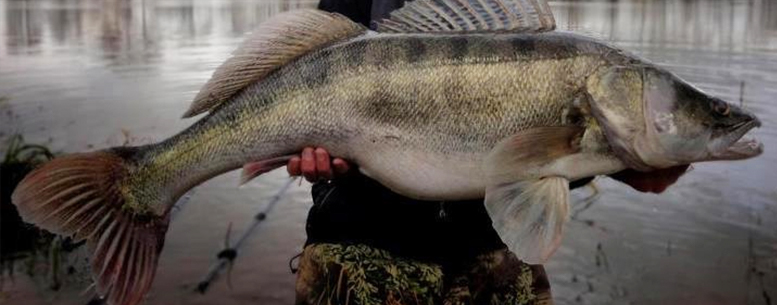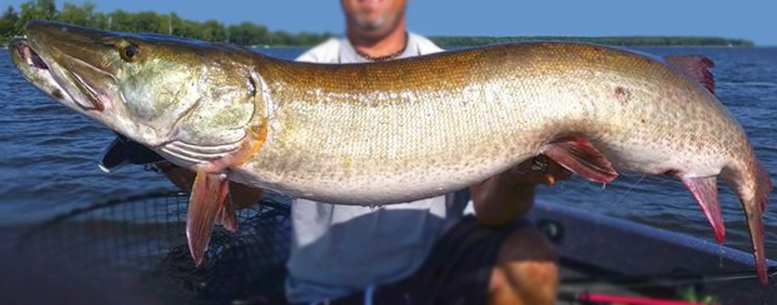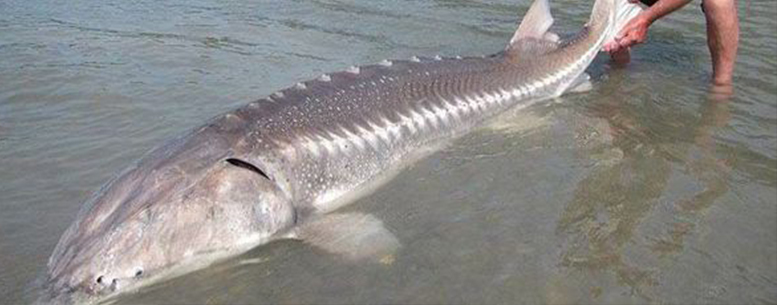There’s plenty to look forward to this spring! Check out Canada’s top largest fish

There aren’t many things that compare to waking up first thing in the morning, hopping in the truck, and hitting the lake for a day filled with fishing. Landing ‘the big one’ is most definitely one of those things.
With the world’s largest coastline, direct access to 3 out of 5 oceans, and more than 200 million freshwater lakes, Canadians are privileged with some of the best fishing on the planet, and we all dream about being the one to break the record.
Some of our freshwater fish are gigantic, and some are borderline dinosaurs!
So that you know where the bar is set, we’re breaking down Canada’s biggest fish on record by species.
Here’s what you’re up against when you’re out in your fishing boat this spring:

Panfish: Black Crappie. Lake Erie, Ontario – 3.78 pounds
Panfish are named that way because they rarely grow larger than a frying pan. But they’re delicious and we want the biggest one we can get our hands on.

White Fish: Lake White Fish. Meaford, Ontario – 14.6 pounds
You can find these fillets in most grocery stores, but if you prefer a Great Lake over the freezer aisle, you have your work cut out for you.

Walleye: Niagara River, Ontario – 22.25 pounds
There’s a special art to landing the not-to-be-confused-with-pickerel walleye, and if you want to beat the current record you’ll have to use every trick in the book.

Pike: Northern Pike. Delaney Lake, Ontario – 42.12 pounds
You’re in for a fight if you want to take on this record. Pike are known to hunt in packs, not unlike wolves, and are relatively aggressive…especially the bigger ones.

Bass: Striped Bass. Mira River, Nova Scotia – 54 pounds
This fish can be found throughout the entire country almost any time of year. They’re fairly easy for beginners, and super fun to wrestle with once you get them on the line.

Muskie: Natural Muskellunge. Georgian Bay Ontario – 65 pounds
This species is so popular in Canada that there’s a national Hall of Fame dedicated to the fish. The “shark of the North” is an apex predator and sure to put up a huge fight. Make sure you’re ready.

Trout: Lake Trout. Great Bear Lake, Northwest Territories – 72.25 pounds
This may be the one you can break. The official record is just over 72 pounds but, due to technicalities, trout weighing in at over 100 pounds were kept off the list. They’re definitely out there.

Salmon: Chinook Salmon. Skeena River, British Columbia – 92 pounds
This iconic species spends its time in the ocean and returns to freshwater to spawn moving at a pace up to 30 km/h and jumping up to 4 meters. Most salmon species are endangered unfortunately. So, if you’re lucky enough to latch on to one, consider setting it free for future generations to enjoy.

Halibut: Pacific Halibut. Langara Island British Columbia – 320 pounds
Although this is a huge catch, the world record gets much higher at 515 pounds! Keep your line tight and the next world record could be yours.

Sturgeon: White Sturgeon. Fraser River British Columbia – 800 pounds.
If it’s sturgeon you’re after, you may have to call for backup. Weighing in at more than 4 times the weight of the average Canadian, the sturgeon is sure to pack a wallop.
If you’re set on breaking a record this year, you’ll want to brush up on the rules and regulations. It would be a shame to land the big one only to find out you’re disqualified over some small detail.
- Fish must be caught using rod and line in Canada according to the Province’s current Fishing Regulations. Fish caught in private or commercial fishponds will not be accepted.
- Fish must be submitted in the year it was caught or until January 31st of the following year. For example fish caught in 2018 must be submitted by January 31, 2019. Exceptions might be given to submissions where no provincial record exists.
- Fish must be measured from the tip of the nose or jaw to the tip of the tail fin, with the tail pinched. See instruction below.
- Photograph is required for all entries!
- To qualify for a Provincial Record the fish must be photographed with a clearly readable measuring tape beside it.
- No changes in length will be accepted after submission!
- Record Fish Canada will be the sole and final judge as to the acceptance of the entries and reserves the right to disqualify unverifiable entries. Submitted photographs will become the property of Record Fish Canada therefore they can be used, reproduced, altered in any way without your permission.
- Furthermore, you warrant that the photo is not subject to any other party’s rights. You agree to fully indemnify Record Fish Canada against any expenses or damages it incurs (including reasonable attorney fees) as a result of any claim against it resulting from the use of the submitted photo or breach of the warranties set out above.
- All fish species are acceptable which is at least equal to the Provincial minimum length requirement.
Even if you don’t set new records this year we’re sure you’ll come close. Make sure to share the joy on our Facebook and Instagram pages. We love helping you show off.
Yours In Boating,